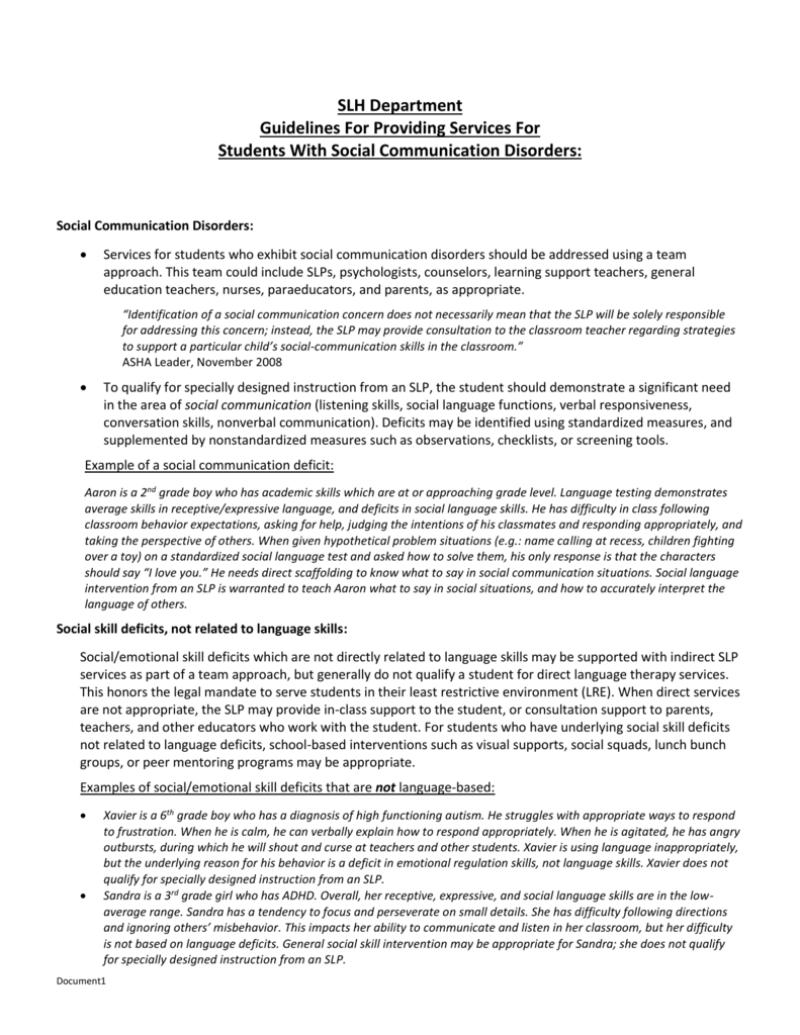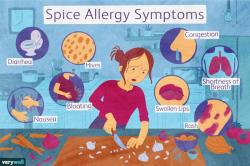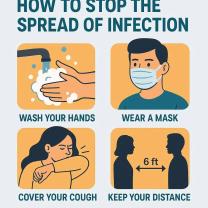What are the criteria for social communication disorder?
Social Communication Disorder (SCD) is a communication disorder that affects an individual's ability to use verbal and nonverbal communication effectively in social situations. The diagnostic criteria for Social Communication Disorder are outlined in the Diagnostic and Statistical Manual of Mental Disorders, Fifth Edition (DSM-5), which is a widely used classification system for mental health disorders. The criteria include:
A. Persistent difficulties in the social use of verbal and nonverbal communication as manifested by all of the following:
Deficits in Using Communication for Social Purposes:
- Difficulty in using communication for purposes of social interaction, such as greeting others, sharing information, or engaging in conversation.
Impairment of the Ability to Change Communication to Match Context or the Needs of the Listener:
- Challenges in adjusting communication based on the context, audience, or social setting. Difficulty modifying language or behavior to suit the needs of the listener or the situation.
Difficulties Following Rules for Conversation and Storytelling:
- Limited understanding and application of the social rules of communication, including turn-taking in conversation, staying on topic, and appropriately sharing information in a narrative.
Difficulty Understanding and Using Nonverbal Communication:
- Challenges in interpreting and using nonverbal cues such as gestures, facial expressions, and body language to enhance communication and convey meaning.
B. The deficits result in functional limitations in effective communication, social participation, social relationships, academic achievement, or occupational performance, individually or in any combination.
C. The onset of the symptoms is in the early developmental period (but deficits may not become fully manifest until social communication demands exceed limited capacities).
D. The symptoms are not attributable to another medical or neurological condition, autism spectrum disorder, intellectual disability (intellectual developmental disorder), or global developmental delay.
It's important to note that the diagnostic criteria for Social Communication Disorder are distinct from Autism Spectrum Disorder (ASD). While there may be some overlap in symptoms, SCD is specifically characterized by difficulties in social communication without the presence of repetitive and restrictive behaviors commonly associated with ASD.
Diagnosis and assessment of Social Communication Disorder are typically conducted by qualified healthcare professionals, such as speech-language pathologists or clinical psychologists, who use standardized tools and observations to evaluate an individual's communication abilities and social interactions.
It's crucial to seek professional evaluation and diagnosis if there are concerns about social communication difficulties in an individual. Early intervention and appropriate support can help individuals with Social Communication Disorder develop effective communication skills and navigate social interactions more successfully.
What criteria characterize social communication disorders?
Social communication disorders (SCDs) are characterized by persistent difficulties with social interaction and communication, impacting the ability to use and understand verbal and nonverbal language for social purposes. Here are some key criteria that characterize SCDs:
Difficulties in social interaction:
- Difficulty initiating and maintaining social interactions with peers and adults.
- Inability to understand social cues and respond appropriately in different social contexts.
- Challenges with taking turns in conversation, sharing information, and engaging in reciprocal interactions.
- Difficulty with nonverbal communication, such as making eye contact, using facial expressions, and interpreting body language.
- Difficulty understanding and using humor, sarcasm, and other figures of speech.
Difficulties in communication:
- Limited vocabulary and grammar skills.
- Difficulties with pragmatics, the social use of language, including:
- Difficulty understanding the implied meaning of communication.
- Difficulty following the rules of conversation, such as turn-taking and staying on topic.
- Difficulty adapting communication to different social contexts and audiences.
- Difficulty with speech-language production, such as articulation, fluency, and voice quality.
- Difficulty understanding and using written language.
Severity and impact:
- SCDs can range in severity, from mild to severe.
- The specific difficulties experienced by individuals with SCDs will vary depending on the individual's age, developmental level, and other factors.
- SCDs can have a significant impact on an individual's social, emotional, and academic development. They can lead to social isolation, loneliness, and difficulties in school and work.
Here are some additional diagnostic criteria for SCDs, according to the Diagnostic and Statistical Manual of Mental Disorders, Fifth Edition (DSM-5):
- The social communication difficulties must be present in multiple contexts (e.g., at home, school, work).
- The social communication difficulties must not be better explained by another mental disorder or developmental disorder (e.g., autism spectrum disorder, intellectual disability).
- The social communication difficulties must cause clinically significant impairment in social, occupational, or other important areas of functioning.
It's important to note that SCDs are not the same as autism spectrum disorder (ASD). While some individuals with ASD also have SCDs, not all individuals with SCDs have ASD. SCDs can occur independently or alongside other conditions.
If you suspect that you or someone you know may have an SCD, it is important to seek professional evaluation and diagnosis. A qualified speech-language pathologist (SLP) can diagnose SCDs and develop a treatment plan to address the individual's specific needs.
Here are some resources for more information about SCDs:
- American Speech-Language-Hearing Association (ASHA): https://www.asha.org/practice-portal/clinical-topics/social-communication-disorder/components-of-social-communication/
- National Institute on Deafness and Other Communication Disorders (NIDCD): https://www.nih.gov/about-nih/what-we-do/nih-almanac/national-institute-deafness-other-communication-disorders-nidcd
- CommunicationFIRST: https://communicationfirst.org/












